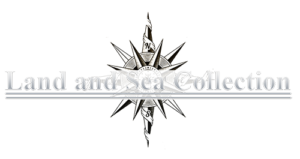MARINER’S ASTROLABEIVER C. WEILBACH MAKER

Measurements:Maximum 13 1/4″ H x 13 1/4″ W
Weight 8 1/2 pounds
Markings:Obverse: Nautisk Ustrolab
Reverse: Iver C. Weilbach & Co.< Unno
1600
Golver + Grarrer Presented is a mariner’s astrolabe made by Iver C. Weilbach for
display in the Danish Maritime Museum in the Kronborg Castle in Helsingor. See http://www.maritime-museum.dk/besoegos/default.asp
Because of the scarcity of early navigation instruments it is not uncommon to find quality
reproductions used by museums. In the case of Mariner’s Astrolabes, there are only 39 originals known to exist. This one is
either a deaccession from the Kronborg or is a duplicate of the one that was commissioned by them in 1935.
The maker, Weilbach, is a famous Danish marine instrument company that
commenced operations in 1755 making them one of the oldest companies in Denmark. They made all types of marine navigation
instruments including sextants, compasses, but are best known for their ship’s binnacles. They continue in business today
as a publisher and distributor of charts.


THE MARINER’S ASTROLABE: Pictured at left is the St. Andrews
astrolab, dated 1616. It is one of the 39 originals, known to exist, and is was one of the very few made in England.
It is very large and weighs 17 pounds. Note the ballast at the bottom.This form of astrolabe was modified for
use at sea. It was a variation of larger, more cumbersome planispheric astrolabes that were unsuitable for
use in that environment. They were too light and unstable, and their solid design made them unsteady in the wind. Navigators
began to carry modified versions starting around 1480, that are referred to as `Mariners Astrolabes’. They are
typically cast from bronze or brass, and have open sections to reduce wind resistance. Weight may be added
to the bottom to add additional stability. The design made for more precise navigational measurements. The device enabled sailors to travel in an East -West direction away from the sight of
land by using the North Star to determine Latitude. The navigator would sight the North star with the movable arm on
the astrolabe, the Alidade, and measure the angle of its altitude above the horizon, thereby determining the ship’s latitudinal position.A fine quality recreation with excellent provenance
from a known maker and museum makes this a worthwhile collectible
